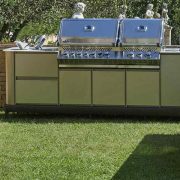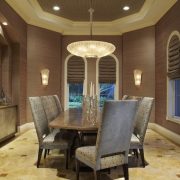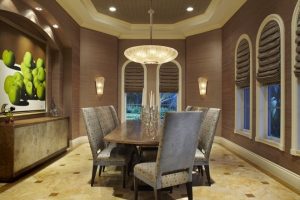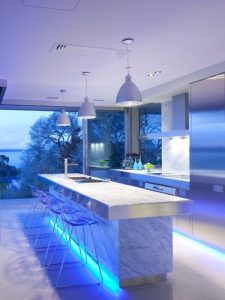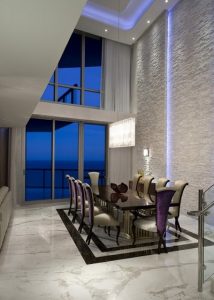5 Benefits of An Outdoor Kitchen
More and more clients these days are considering adding an outdoor kitchen in the construction or renovation of their villa. And most of the time their motivation to do so comes from the desire to spend more time in the open air and enjoy their outdoor area as much as possible.
So, if you are having questions about that vacant space in your backyard or garden and considering using it to build an outdoor kitchen, here are some points to meditate upon that will surely convince you.
1. A new room
It may be construed that remodeling the existing internal kitchen could be a more viable option than constructing a brand new kitchen outdoors. But having an entirely separate kitchen is actually a more functional option. In fact, one of the many reasons why outdoor kitchens are becoming more and more popular is because their creation expands the size of the house and essentially duplicates the size of the kitchen. It gives the family an additional room to cook, eat, relax and entertain in.
2. More livable space
The fact that an outdoor kitchen represents a real new room means expanding the livable space of your home. Building a space organised around a cooking area means giving one’s family an extra area to spend time together. Moreover, if an outdoor kitchen is created under an already existing veranda and there is the possibility of having sliding windows that define the space, it will be possible to use it even when the weather is less pleasant.
3. A meeting place
Among the advantages of having an outdoor kitchen, no doubt having a real meeting area is one of them. Modern technologies make many accessories available such as heating or cooling systems, fans, lighting and even outdoor TV’s to create a real paradise outdoors with all the comforts. The outdoor kitchen turns into an excellent accomplice for creating memories and emotional bonds. Birthdays, holidays and family gatherings can be even more memorable if it is possible to bring together family and friends in a particular setting different from the usual living room.
4. An investment that you can see
The construction of an outdoor kitchen has a high rate of return on investment compared to other home renovation projects. Regardless of dimensions and accessories, it is necessary to use materials of high quality that satisfy various requirements, among which the most important regards resistance to extreme weather conditions. Among the most used materials stainless steel undoubtedly stands out, which, together with the design of various other elements made for outdoor use, ensures maximum resistance and durability.
5. A custom-made design
It is well known that one of the peculiarities of outdoor kitchens is the ability to customise almost every single component. In addition to size and layout, you can choose from a variety of appliances that can also be adapted to specific spaces.
In the same way, it is possible to customise the structure by enriching it with a wood-burning oven, a barbeque or a fireplace which may not be adaptable to an indoor kitchen.
One can choose from countless materials for outdoor kitchens also in terms of surface finish. Customisation embraces not only the space intended for the kitchen but the whole living area created outdoors. The development made in terms of research today allows us to use various materials far from the classic idea of the built-in kitchen, making the space luxurious and consistent with the surrounding property.
All in all, one of the best reasons to embrace the idea of building an outdoor kitchen is that ultimately it is an investment in your own well-being and family. There are several scientific studies that show how staying outdoors improves memory and concentration, facilitates mental rest, reduces stress levels and stimulates creativity. Building an outdoor kitchen in your home means creating an opportunity to spend time outdoors.

